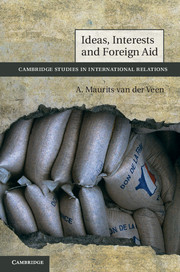Book contents
- Frontmatter
- Contents
- Figures
- Tables
- Preface
- 1 The many uses of foreign aid
- 2 One policy, multiple goals
- 3 Debates about aid
- 4 Aid frames
- 5 The administration of aid policy
- 6 The generosity contest
- 7 The popularity contest
- 8 Conclusion
- Appendix A Legislative debates coded
- Appendix B Debate coding examples
- Appendix C Aid distribution: data and sources
- Bibliography
- Index
Preface
Published online by Cambridge University Press: 07 September 2011
- Frontmatter
- Contents
- Figures
- Tables
- Preface
- 1 The many uses of foreign aid
- 2 One policy, multiple goals
- 3 Debates about aid
- 4 Aid frames
- 5 The administration of aid policy
- 6 The generosity contest
- 7 The popularity contest
- 8 Conclusion
- Appendix A Legislative debates coded
- Appendix B Debate coding examples
- Appendix C Aid distribution: data and sources
- Bibliography
- Index
Summary
Preface
I have been interested in foreign aid for almost as long as I can remember. Growing up in the Netherlands, I read the free monthly magazine Sam Sam (Working Together), published by the Dutch government to educate children about development assistance and distributed to every student in the upper grades of elementary school. When I began to pay attention to national politics some years later, I took for granted that although specific features of the development aid programme were frequently debated in the legislature and in the media, the need to have a large and generous aid programme was rarely questioned. Indeed, it was not until I moved to the United States for college that I encountered arguments against foreign aid per se.
If Americans had a different view of the practice of development assistance policy, they also appeared to have a different view of the theory that might explain it. Rational choice theory, rather more popular in the United States than in Europe, seemed to suggest that government policies must always pursue material interests, which made aid policy – with its ostensibly altruistic goals – hard to explain. I began to wonder how aid policy could be perceived so differently in the Netherlands and the United States, even though the policy instruments were essentially the same; I also wondered whether these differing perceptions might explain how widely aid programmes varied across donor states; and I wondered how the logic of rationality might account for a policy that seemed to have so many different possible motivations.
- Type
- Chapter
- Information
- Ideas, Interests and Foreign Aid , pp. xi - xivPublisher: Cambridge University PressPrint publication year: 2011

